Teaching Guides
Also check out some earlier teaching notes on a variety of Miller’s plays that were in our earlier newsletters, here.
After the Fall 
- Check out this beginners’ guide to the play composed by Jere Pfister for the Alley Theater’s 2005 production (reproduced with permission). It includes a biography of Miller, brief synopsis, production history, influences on the play with several useful links, short commentaries on theme, character, as well as timelines and student activities, suggestions of comparative works and an annotated bibliography.
- And there is the guide at Shmoop, as described below–a useful site to get a sense of some basic literary aspects of the play.
All My Sons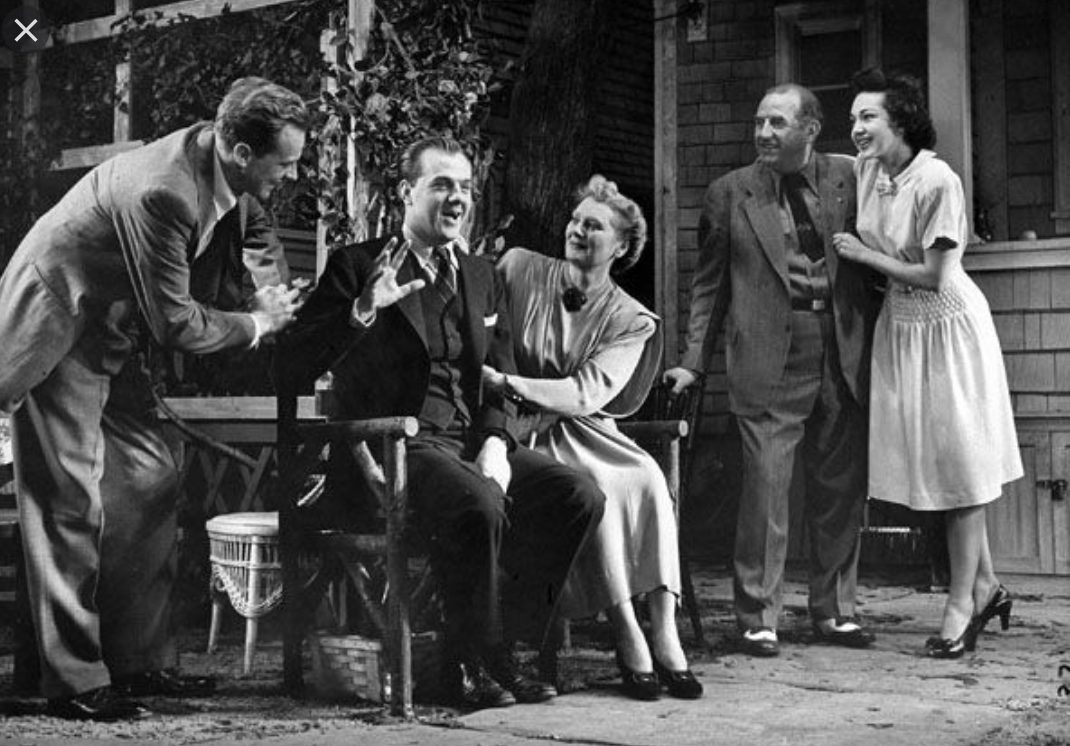
- GCSE study guide material from the UK, with an introduction to the play, background to the action, discussion of Joe Keller as a representative type, outline of events before the play, and notes on the structure, characters, good quotes to consider, Chris’s relationship with his father, and a guide to writing about the play.
- Stateside you could get some ideas by looking at the Shmoop website–written in a catchy style that will appeal to reluctant students. They have good introductory notes on themes, characters, setting, symbol, quotes etc.; all related without any technical jargon and with an eye to drawing in those non-english majors–also some good study question suggestions and links to other resources–worth a peek.
- Eight powerpoint lessons for sale (4 pounds 50 pence) through tes.com. They apparently examine the play through the lenses of Aristotelian tragedy, Goffman’s “Face Theory,” and narrative structure, as well as symbolism, characterization, theme, allusions, et cetera. Designed for a three week unit at the British AS level, with quizzes after every act and a mock exam at the end of the unit. Some information and inspiration from the 2019 National Theatre production is included.
- Amanda Wrigley has worked on documenting many of Miller’s British TV productions and here is a link to her discussion of the 1958 one filmed by Granada for ITV.
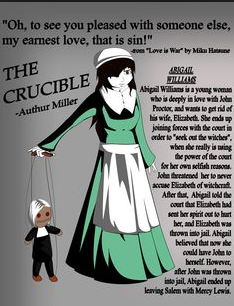 The Crucible
The Crucible
- Good shots of the 2002 Broadway stage version of The Crucible on the website of one of its associate producers, Toby Simkin. They include, also, some great candid shots of Miller at the rehearsals, some history of other productions and a short clip of the live performance.
- A great media presentation now available on YouTube, by Stefani Koorey, titled ““Because it is my name!” Arthur Miller’s Moral Imperative, The Crucible and Miller’s HUAC Testimony,” that discusses The Crucible, and Miller’s involvement at the time with both HUAC and Marilyn Monroe. Great background for discussion of the play.
- Interesting teacher’s resource guide to the play created by West Yorkshire Playhouse, that emphasizes the drama’s production values, with directing and design activities, as well as information on characters and historical contexts.
- Amanda Wrigley has worked on documenting many of Miller’s British TV productions and here is a link to a 2015 article she wrote on the 1959 (Granada), 1968 (Rediffusion) and 1981 (BBC) British TV productions of The Crucible.
- Some great teaching materials (lots of great pictures) built around the award winning 2012 production of Death of a Salesman by Belvoir St. Theatre in Sydney, Australia, directed by Simon Stone, with Colin Friels as Willy.
- Top Ten Notes about The Crucible by Mojo Notes. Fairly basic 8 minute introduction to the play (with scenes from the 1996 movie, and interview material with Miller). But no idea where they got the idea that the play was originally titled The Chronicles of Sarah Good!
- An interesting piece of information that students may find of interest is the recent (2017) discovery that Marilyn Monroe, Miller’s second wife, was actually a descendant of one of the Puritans who was tried for witchcraft!
- The Crucible 17 March 2021 streamed online discussion about Miller and Shakespeare at 7.30pm EST, as part of Shakespeare Hour Live series by Shakespeare Theatre Company, in preparation for an upcoming production of The Crucible in Sidney Harman Hall, 610 F Street NW, Washington, D.C (dates TBA). Hosted by Simon Godwin, Artistic Director; and Dr. Drew Lichtenberg, Resident Dramaturg. With panelists: Whitney White, OBIE Award winning director (who will be directing the upcoming production); Jason Butler Harner (played Parris in Ivo Van Hove’s The Crucible); and Dr. Susan Abbotson, Miller Scholar and professor of English at Rhode Island College. The episode is available on their YouTube website.

Dr. Susan Abbotson, Jason Butler Harner, and Whitney White, doing a Shakespeare Hour Live, episode #40. - Check out this useful guide to the play composed by Jere Pfister for the Alley Theater’s 2005 production (reproduced with permission). It includes a biography of Miller, brief synopsis, a character list, playwright’s perspective, varied historical perspectives, brief discussions of theme, setting, symbolism, as well as discussion topics and suggested activities, and annotated lists of useful websites and books.
- The Crucible as analyzed by “Thug Notes”!! A fun, brief, introduction to the play…
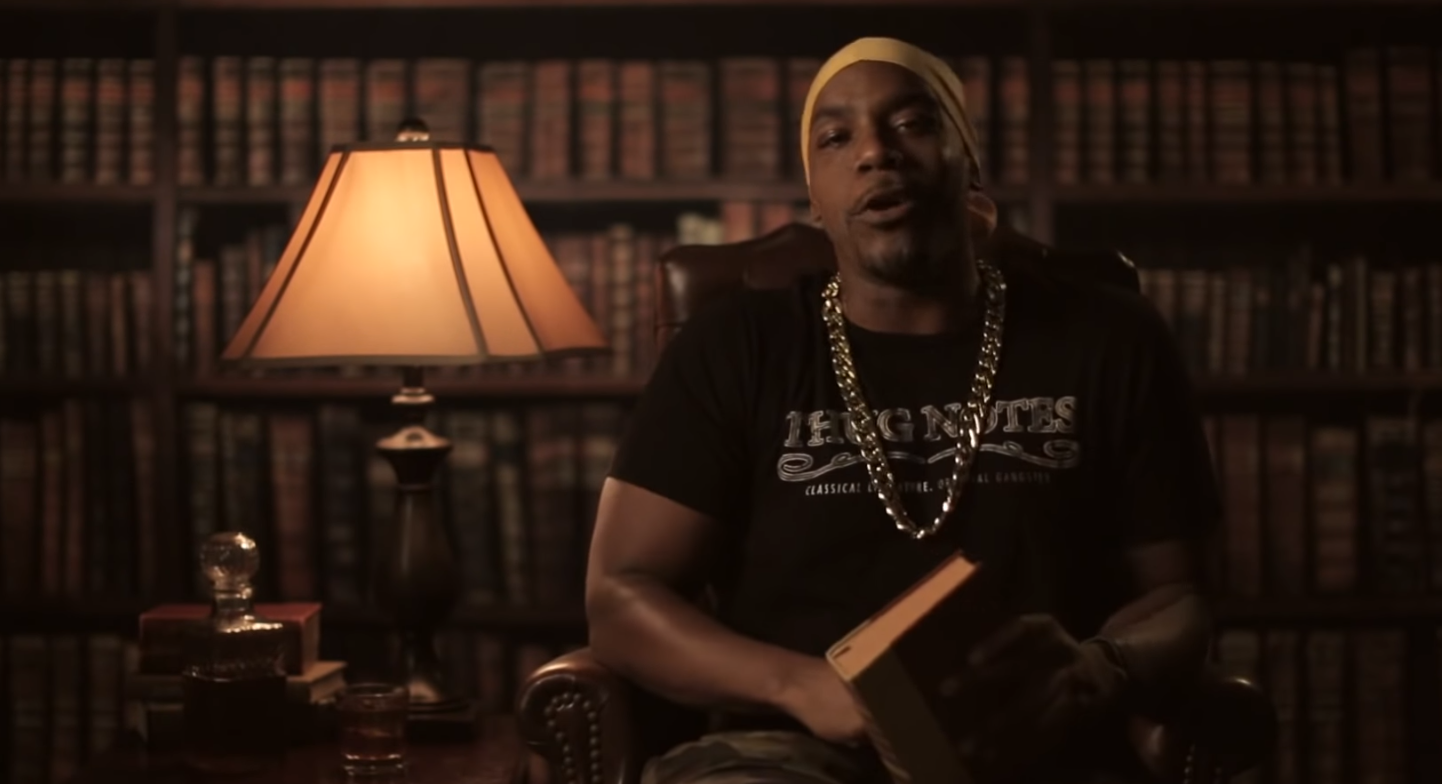
Thug Notes - This research guide offers a compilation of links to venues that give biographical material on Miller, as well as ones focused on the following topics for possible consideration when teaching the play: 1.) Compare and contrast the Salem Witch Trials and McCarthyism. 2.) Understand the living conditions in Massachusetts in the 1700s 3.) Examine the dynamics of Puritanism in 1962 4.) Gather historical perspectives on the American Colonial period.
- Never a substitute for actually reading the play, but such guides as Sparknotes or Cliff Notes can help to jog memory after the text has been read first hand, and introduce some of the more obvious discussion topics/ideas. Our personal favorite of these sites, however, is Shmoop.
- NEH website has some background and teaching notes for The Crucible.
- Help Teaching offers a bunch of multiple choice style questions on the play from which you can select to build your own quiz through the website (selections for 10th or 11th grade). Some typos and some of the questions are a little too obvious, but you get to choose which you want. If you go here, and create your (free) membership, you can also print out worksheets on the play.
- A useful archive of BBC radio pieces that include a biography of Miller from Christopher Bigsby, interviews with a bunch of theatricals who have worked with Miller’s plays, including one with Richard Eyre on his production of The Crucible. There are also some links to various articles, though the link they had to their Bite-Size guide to The Crucible no longer works.
Death of a Salesman
- Wendell Pierce talks about playing Willy Loman in London (2020) and on Broadway (2022).
- Good history of Death of a Salesman from New York Theatre Guide that covers how it has appeared on Broadway in the past (in preparation for the 2022 All-Black production), as well as a piece on celebrities who have starred in the play.
- Link here to an hour long podcast created in the UK, recorded for The Play Podcast focused on Death of as Salesman. The play and its importance are described, and leading US Miller scholar Stephen Marino explains its creation, history, and key elements about the play. Good introduction to those just starting to study the play.
- Resource Guide created by West Yorkshire Playhouse that offers, synopsis, character descriptions, interviews with cast and crew of their production of the play, and some suggested drama activities to draw out character and meaning.
- Amanda Wrigley has worked on documenting many of Miller’s British TV productions and here is a link to a 2015 article she wrote on the 1957 (Granada/ITV), 1966 (Play of the Month production for BBC1) and five-part production in the English File series for BBC Schools in 1996 of Death of a Salesman.
- Click on this link to a PowerPoint slideshow that offers a history of Death of a Salesman stage (and film) productions. Beginning with Lee J. Cobb in 1949 and going through major productions to the RSC one with Antony Sher in 2015. The first half concentrates on the various renditions of Willy Loman, then the second looks more closely at different stagings. There is also a script– Salesmanslideshow–that accompanies the slideshow. Arrows are included to show you where you can click to the next slide.
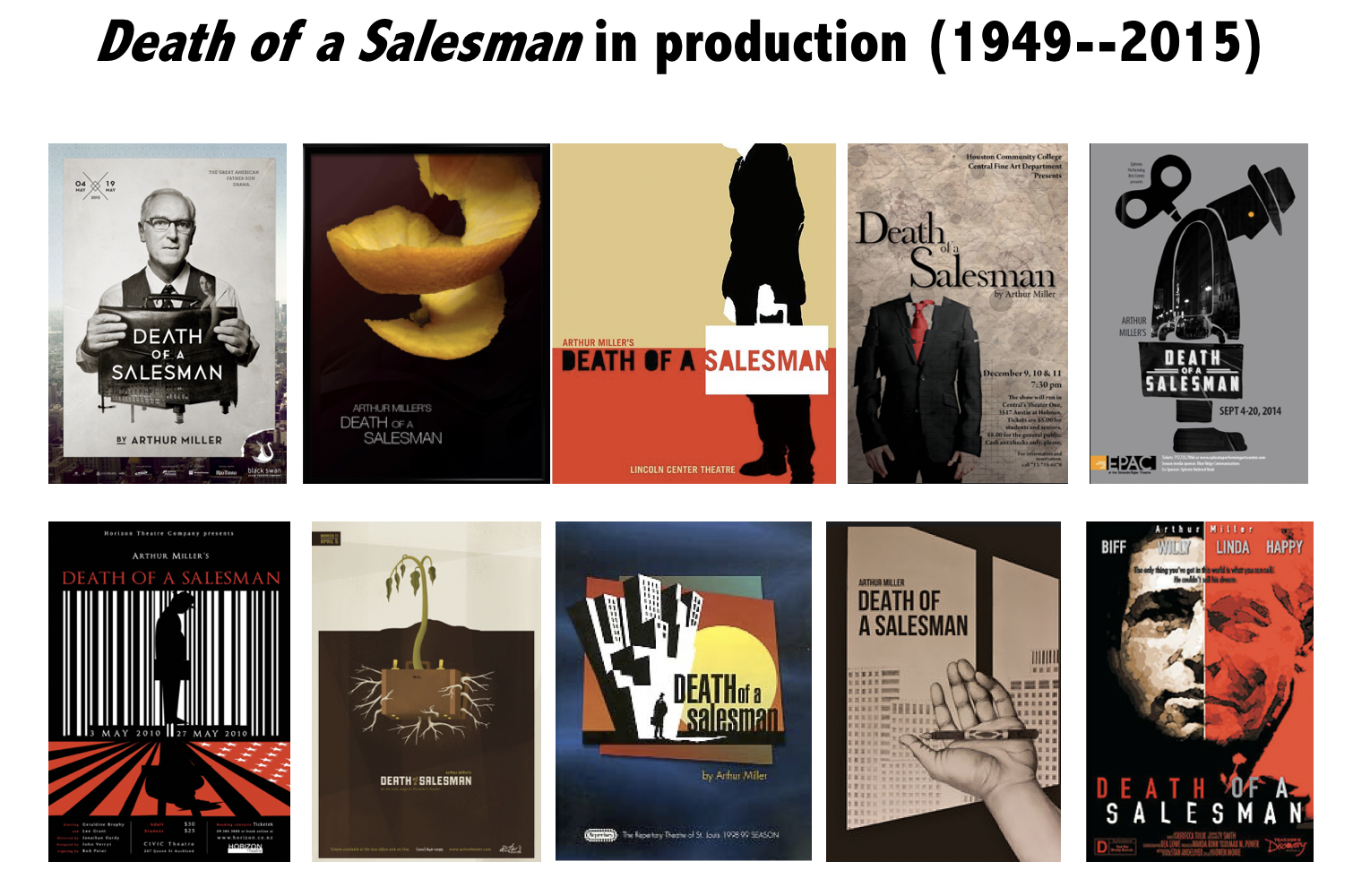
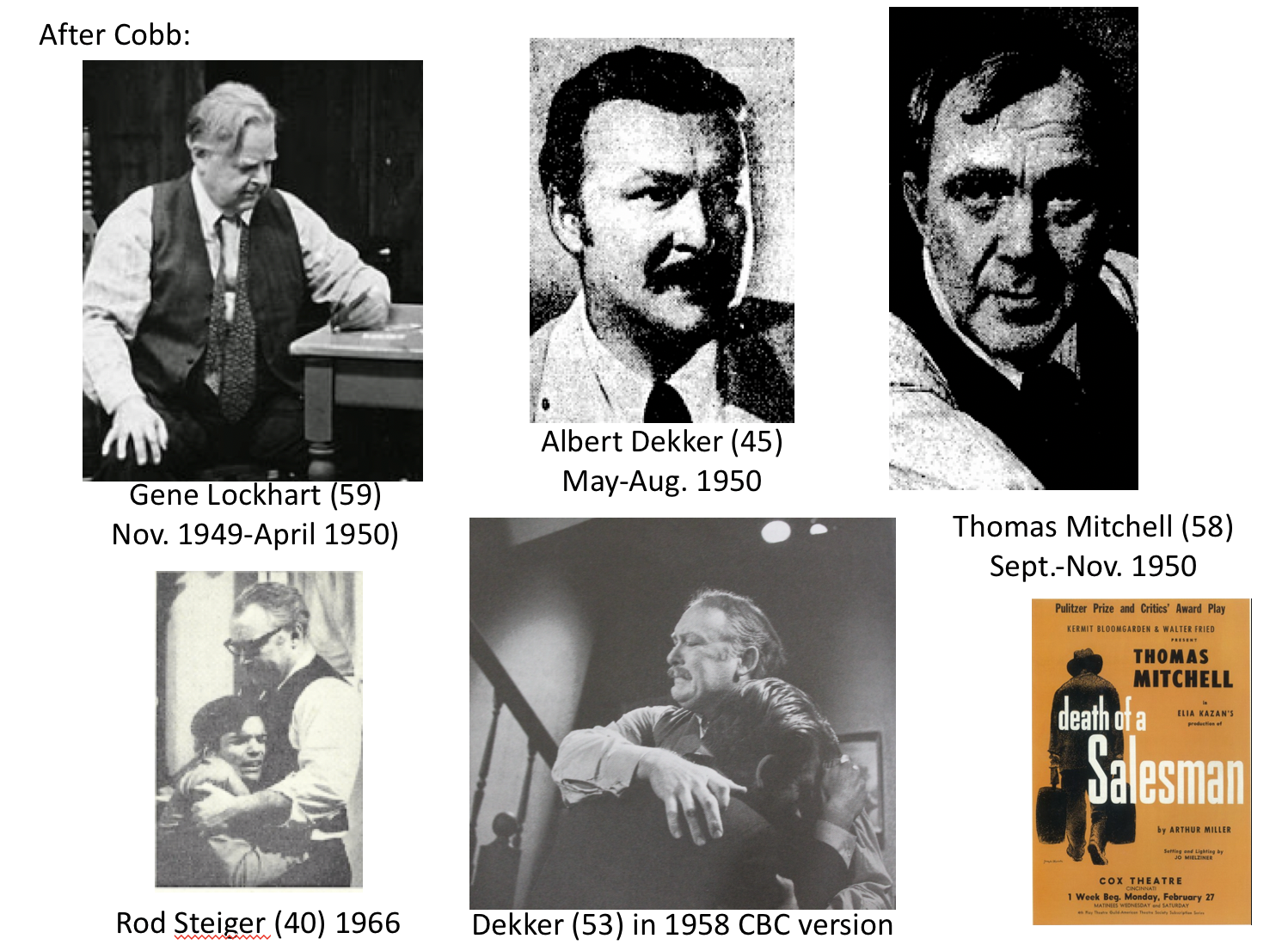
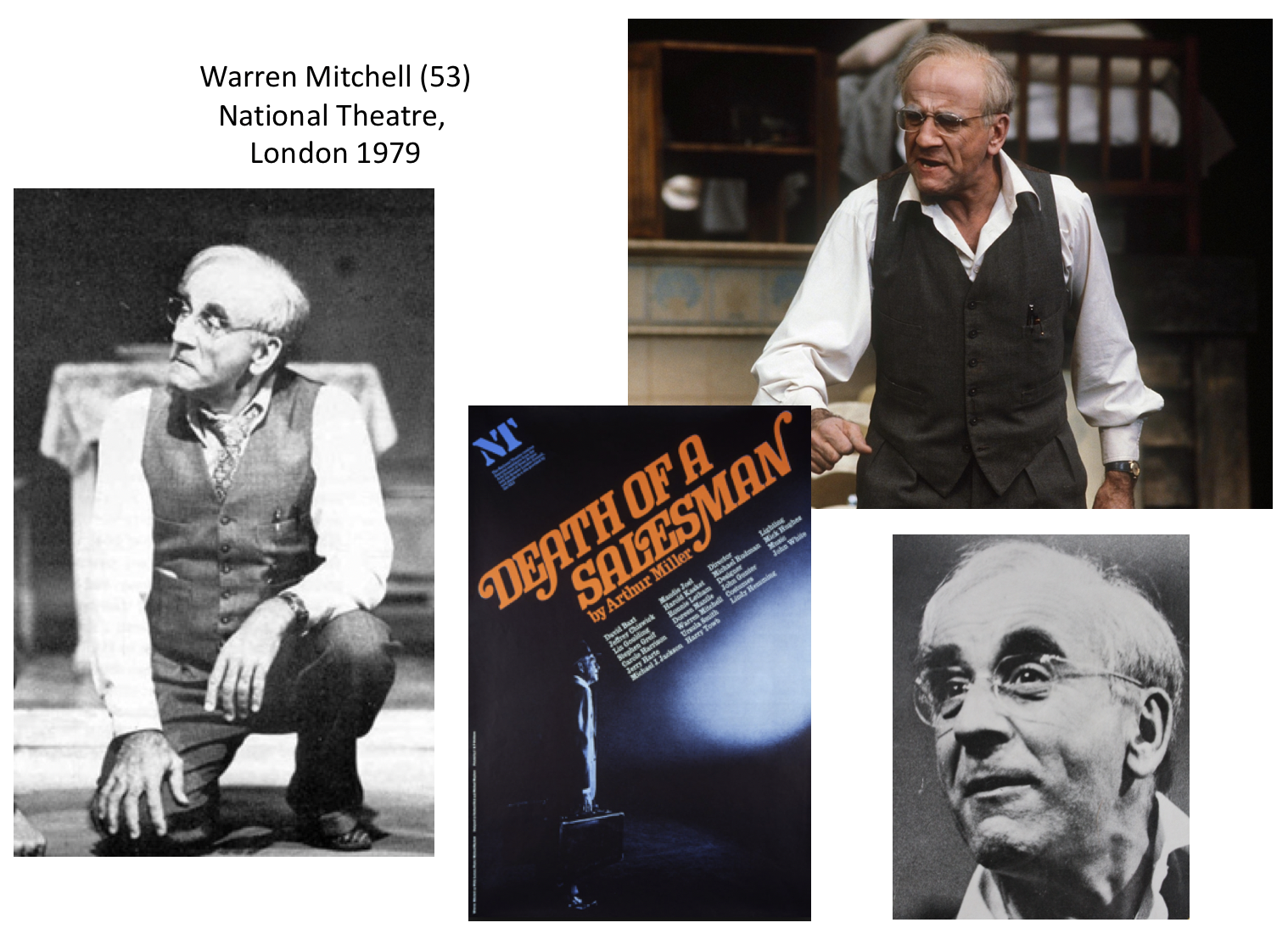
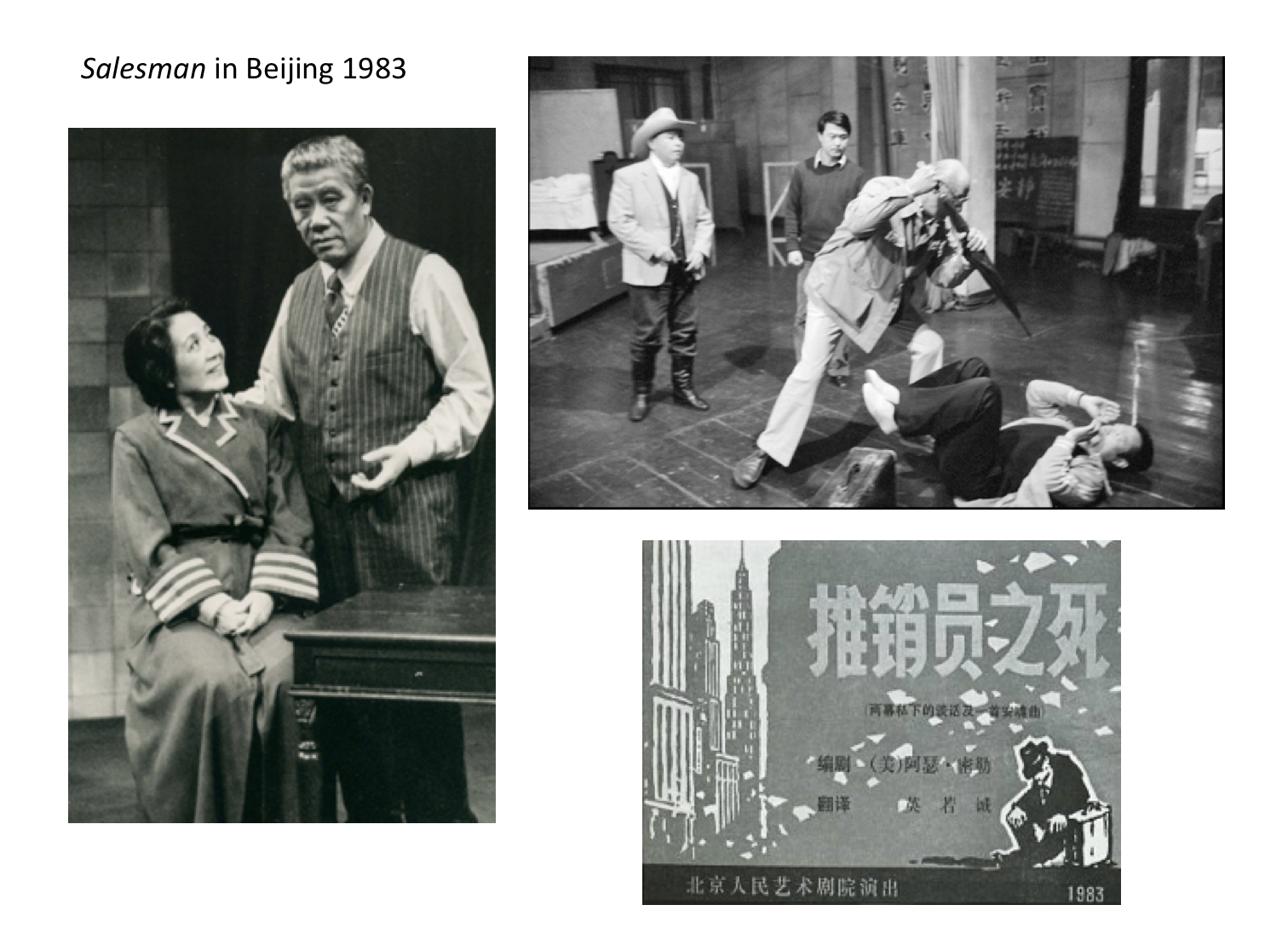
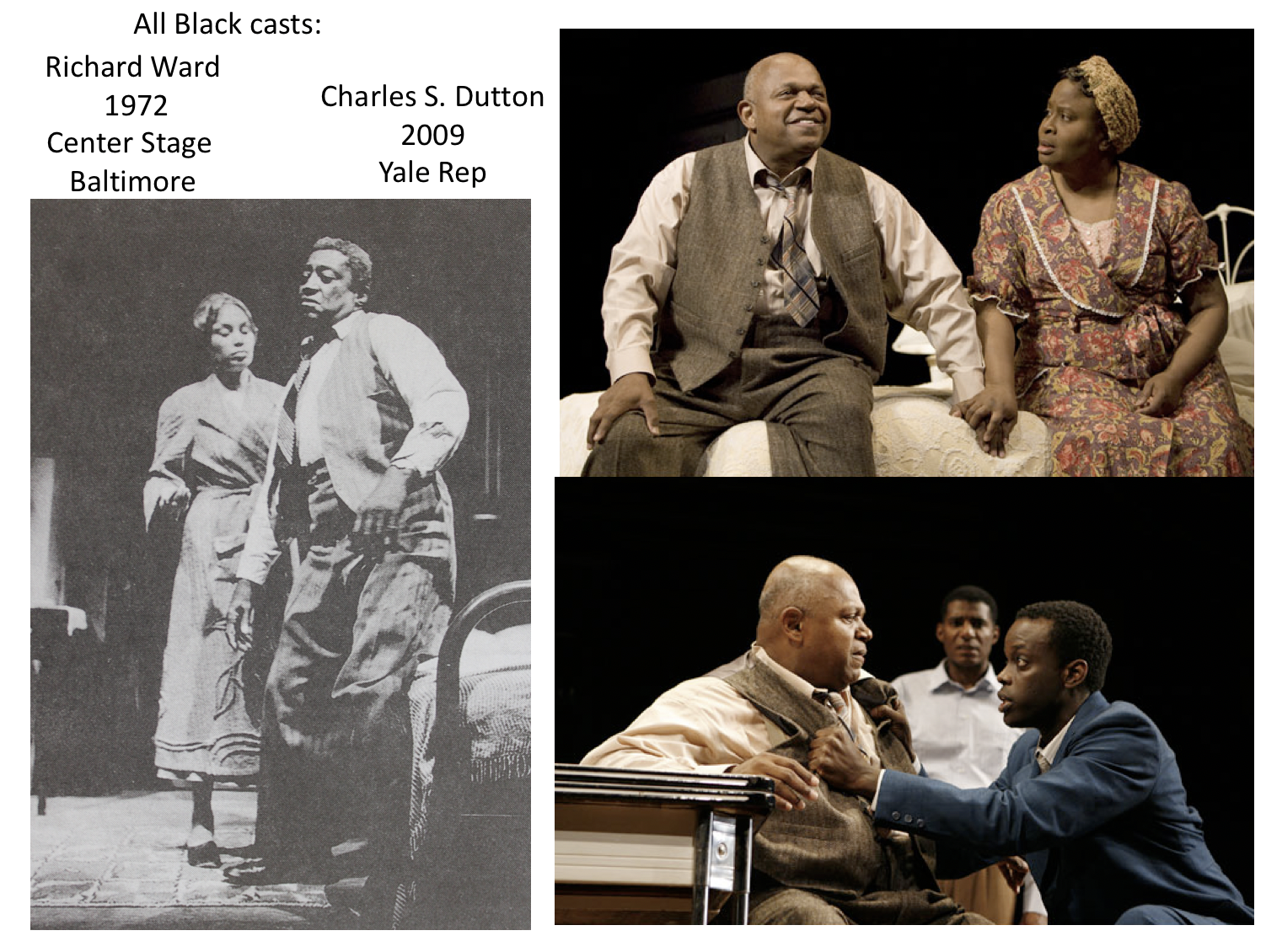
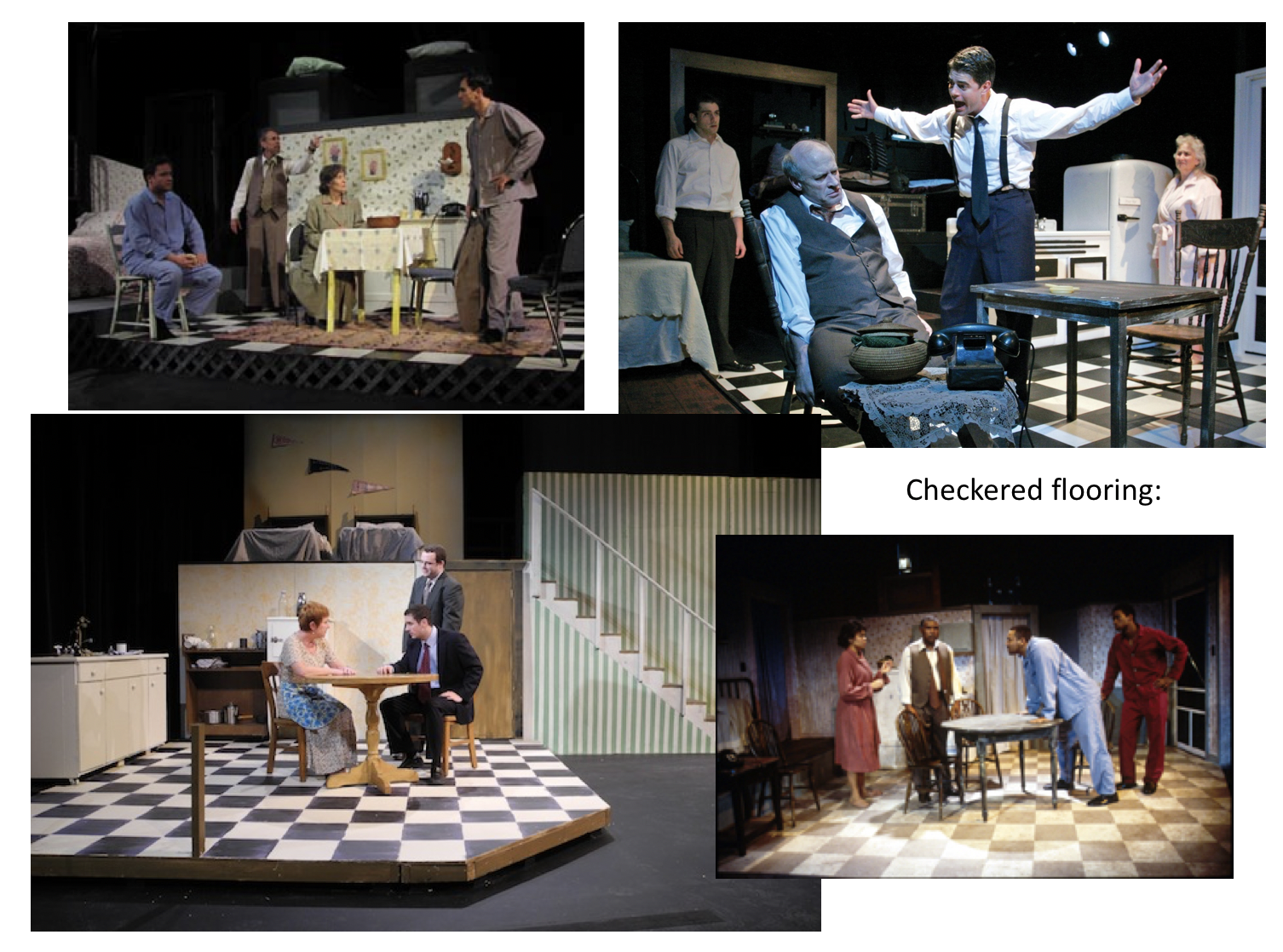
- Good site on Miller from the Kennedy Center from their resources for online educators, based around Death of a Salesman with links to a twenty minute interview with Miller as well as full versions of both the Fredric March 1951 movie version and the 1985 Dustin Hoffman one.
- Here is a script (staging-salesman-1949_2009) and an accompanying power point slideshow (salesman1949_2009pics) that describe two distinct productions of Death of a Salesman: the original one from 1949 directed by Elia Kazan, against an all-black version at Yale Rep in 2009, directed by James Bundy.

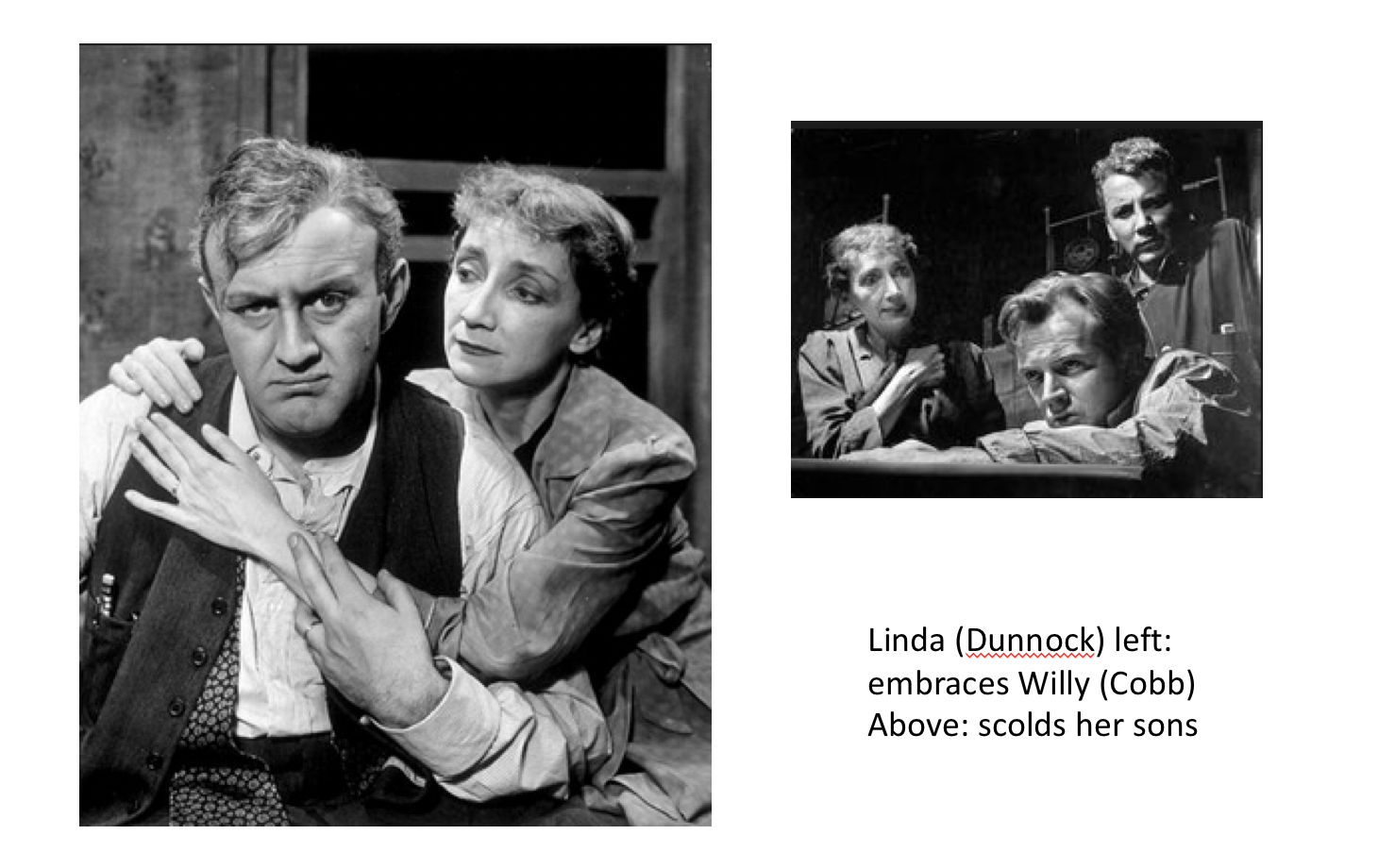
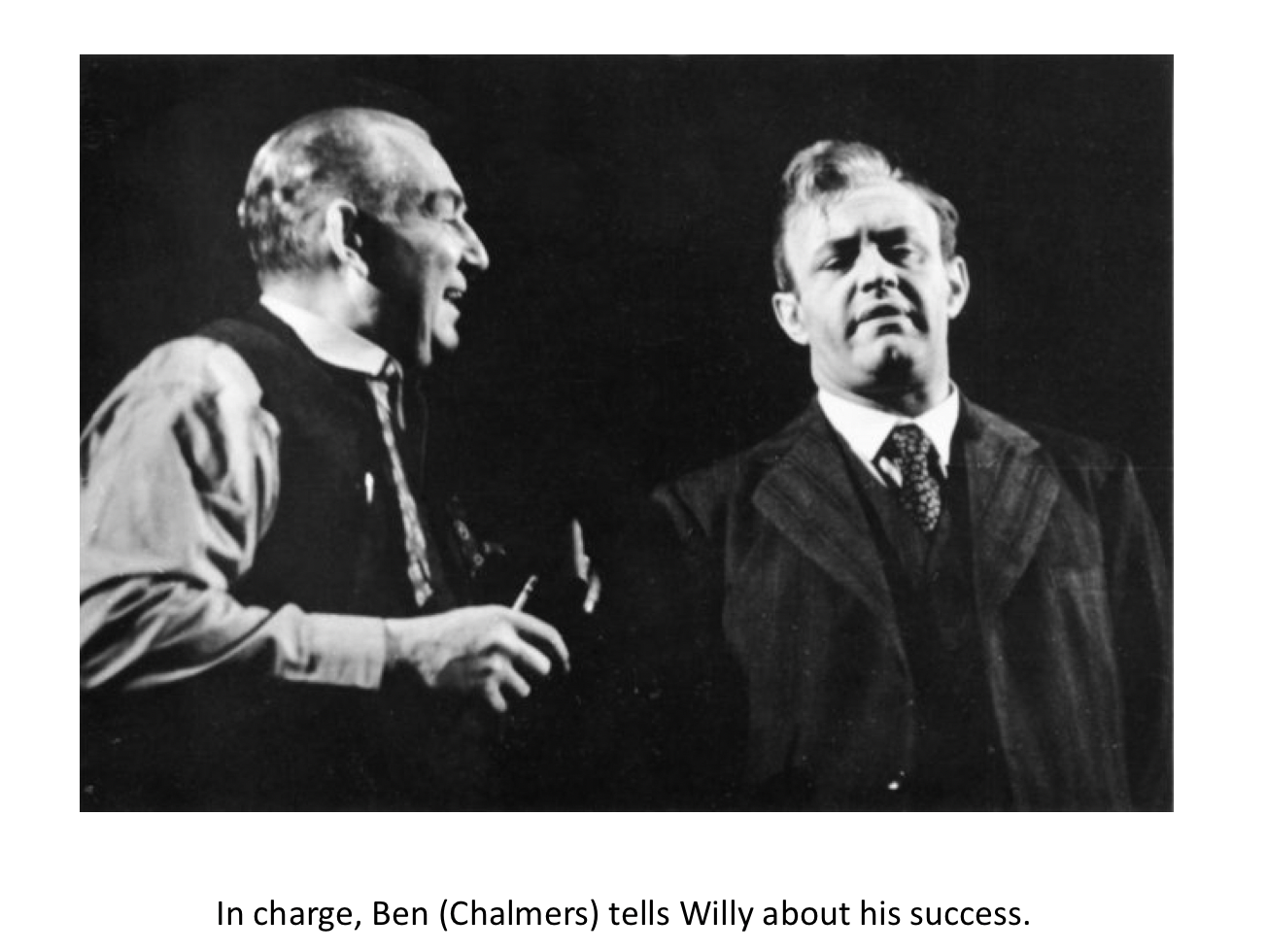
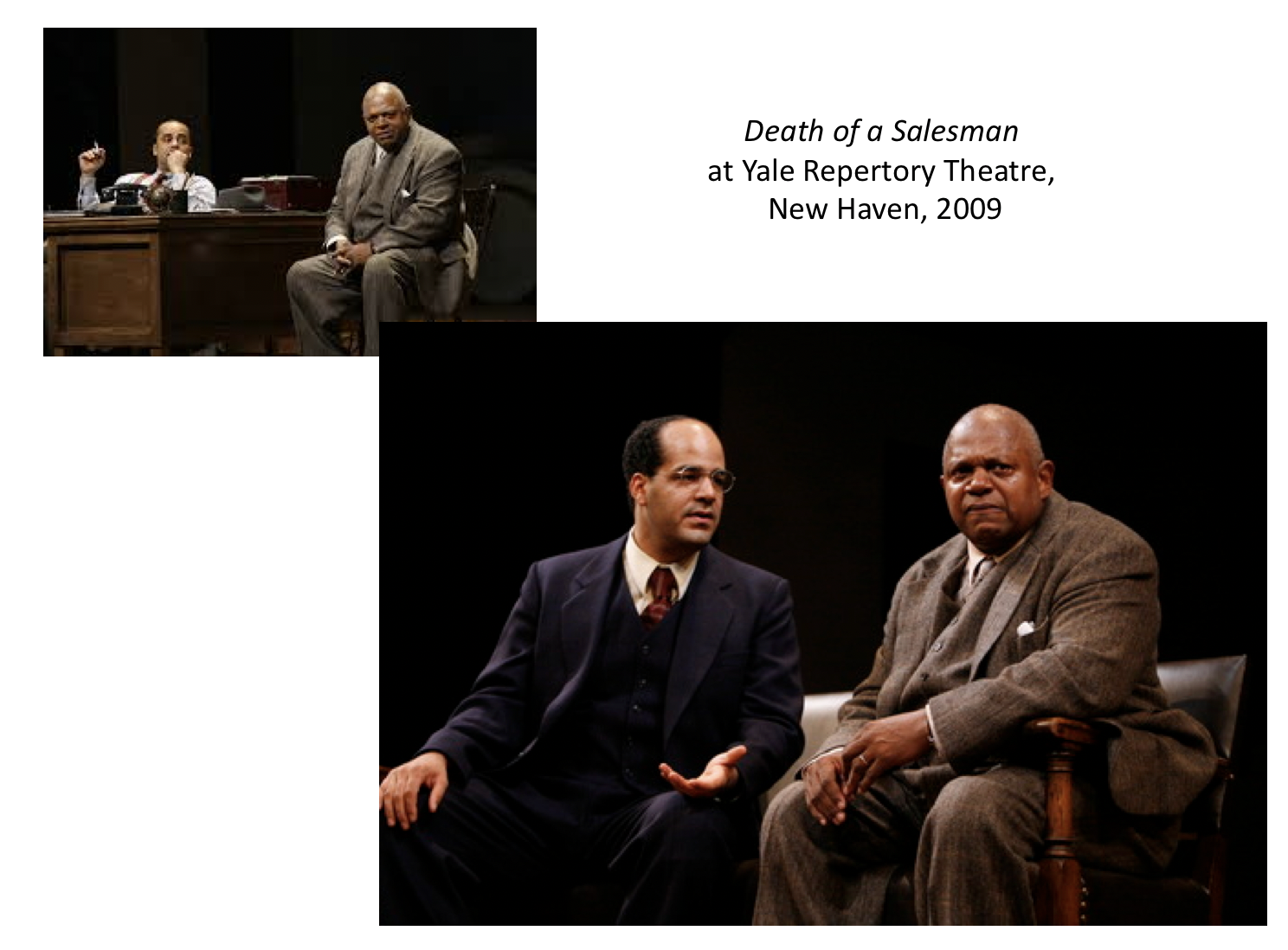
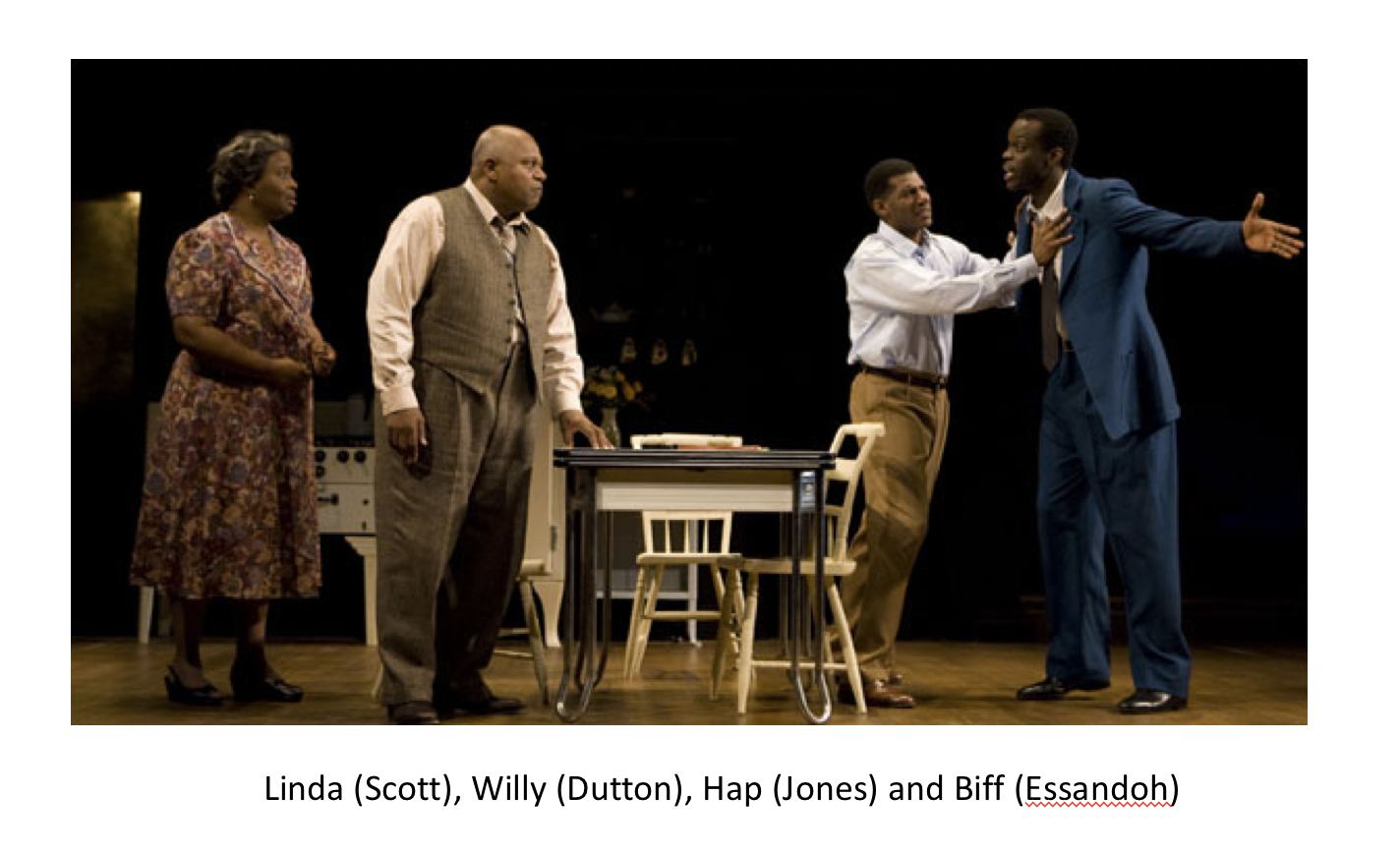
- Useful guide to the play from Nanjing School with some good links, and .pdfs of materials to download and use in class, such as a comprehensive series of questions for students to address as they read the play a section at a time.
- Death of a Salesman as analyzed by “Thug Notes”!! A fun, brief, introduction to the play… or for more detailed analysis try Shmoop.
- Looking for something more complex–upcoming scholar Mutee Abdul Salaam al-Sarory from Yemen offers his MA Dissertation (as a downloadable .pdf DeathofaSalesmanMAThesis2004), Death of a Salesman: A Study of its Attitudinal Structure for consideration. The study shows how the play’s structural elements interact to reveal its themes and he makes some interesting connections and observations along the way.
- Here is a write-in study guide for the play aimed at 12th grade students written for us by High School teacher Karen Morrisette. Print it out and use it in class–have your students fill in their responses. If you need access to Miller’s short story “In Memoriam” it was printed in New Yorker 25 December 1995 and 1 January 1996, pages 56-57. Pictures of the original set of Death of a Salesman can be found in several sources, including Brenda Murphy’s Miller: Death of a Salesman (1995) [this has an early sketch, a painting by Mielziner and a still of the set], Miller’s autobiography Timebends: A Life (1987) [just the still] or Enoch Brater’s Arthur Miller: A Playwright’s Life and Work (2005) [just the sketch]. If you want to ask Karen questions about the guide send e-mail.
- A good way to get things running is to do a quick survey with the class on how they reacted to the play–sample survey.

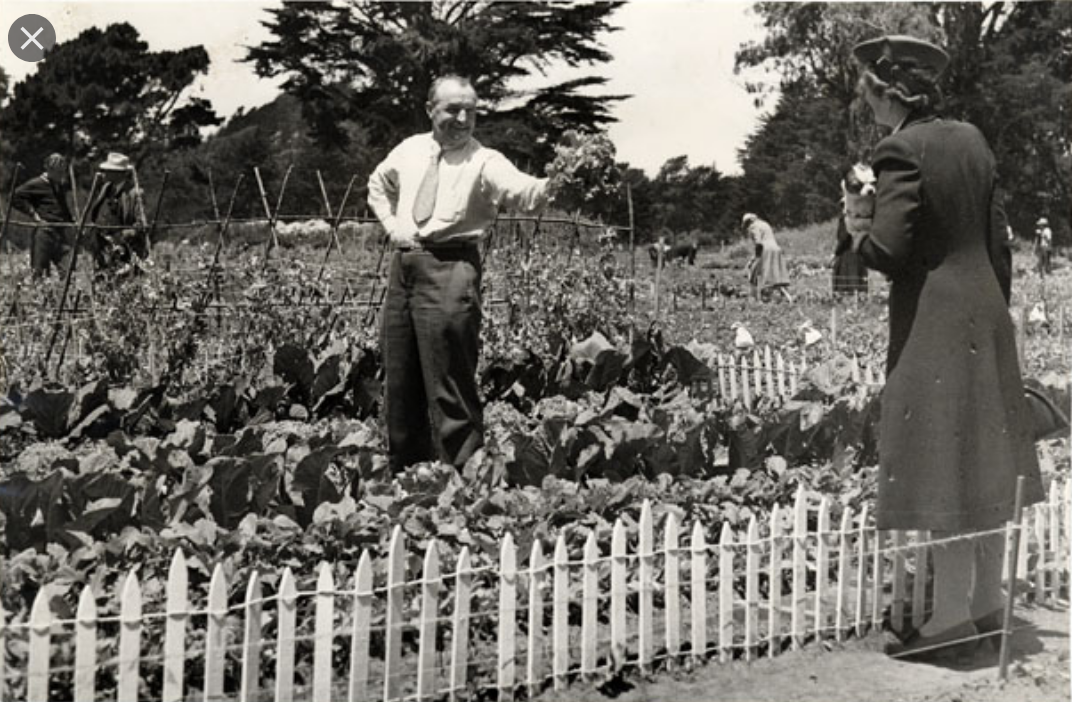
- This brief essay may help students approach the play from a new angle to interesting results. This idea is based on a presentation Carlos Campo gave as part of a teaching panel on Miller at ALA, to guide students into recognizing some of the play’s symbolism regarding nature.
- A good way of getting your students to become really familiar with the play is to get them to write a ten/fifteen minute version, either by piecing together what they feel are the key lines in the play, or by following the plot but using their own idiom. This works best done in smaller groups, where each could produce their version of the whole play, or the text could be divided into sections. Students enjoy reading these “refined scripts” out, and the effectiveness of what they produce is a telling indication of how well they know the play.
- Other good student activities are to have them create a prequel or a sequel to the play, or write a journal from the point of view of any one of the main characters.
- Group work, followed by a class discussion on the play’s characters is often rewarding–see worksheet.
- Kind of like a pared down Coles Notes, with the added possibility of feedback, these pages from the Homework Online group are definitely geared to new students of the play. They give a summary and explanation of the play, brief analyses of the main characters, discussions of themes, motifs, and structure, with a few key quotes and a very short page on Miller. They also provide a forum for readers to post questions and answers on the play (though this is none too user friendly). There is also a store to buy copies of the play, videos, notes etc.
- A useful archive of BBC radio pieces that include a biography of Miller from Christopher Bigsby, interviews with a bunch of theatricals who have worked with Miller’s plays, including one called “Acting Arthur Miller, Free Speech on Campus” that has Zoë Wanamaker and David Suchet, stars of a BBC production of Death of a Salesman discuss acting Arthur Miller with Philip Dodd. There are also some links to various articles, though the link they had to their Bite-Size guide to Death of a Saleman no longer works.
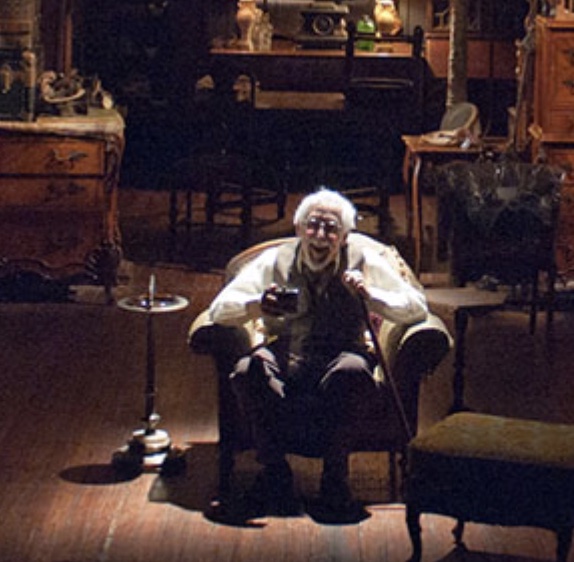 The Price
The Price
- Here is a link to Chicago’s Timeline theatre’s production notes for their 2015 production of The Price. They have a backstory pamphlet you can download, production photos and various details about this successful production.
A View from the Bridge
- A View from the Bridge an excellent BBC 3 audio production directed by Martin Jarvis with Alfred Molina, Melissa Benoist, Reed Scott, Jane Kaczmarek, Matthew Wolf, and Hector Elizondo. Available on YouTube. One hour and 37 minutes long.
- Interview in The Guardian with Belgian Director Ivo van Hove on directing the 2014 Young Vic version of A View from the Bridge.
- Here is a research guide that offers a compilation of links to venues that give biographical material on Miller, as well as ones focused on the following topics for possible consideration when teaching the play: 1.) Compare and contrast the life described in Italy and the promise of the American Dream. 2.) Understand the context of mass immigration of Italians to New York in the 1950s. 3.) Examine the impact of McCarthyism in shaping Miller’s presentation of betrayal. 4.) Gather historical perspectives of the pot-war period in America.
- Amanda Wrigley has worked on documenting many of Miller’s British TV productions and here is a link to a 2015 article she wrote on 1966 (ITV) and 1986 (BBC) British TV productions of A View from the Bridge.
- Check out these pages at shmoop.com. Some interesting new commentary on the play–written in a catchy style that will appeal to reluctant students. They have good introductory notes on themes, characters, setting, symbol, quotes etc.; all related without any technical jargon and with an eye to drawing in those non-english majors–also some good study question suggestions and links to other resources–worth a peek.
- A useful archive of BBC radio pieces that include a biography of Miller from Christopher Bigsby, interviews with a bunch of theatricals who have worked with Miller’s plays. There are also some links to various articles, including an interview with Mark Strong on playing Eddie, though the link they had to their Bite-Size guide to A View from the Bridge no longer works.